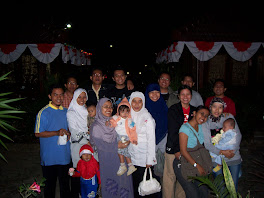Product Specification
Multi·Project·Planner addresses the multiple project management problem.
As the main purpose of the program is to assist the operating management in the scheduling task and the handling of daily exceptions, the focus is on:
The puzzle problem of scheduling a number of projects in a scenario of limited resources.
Handling the ripple or domino effect of one project being delayed upon the others.
Facilitating a Just in Time kind of planning.
Accepting that plans do not allways comply with reality.
The scheduling task is performed with the look and feel of a planning board.
Multi·Project·Planner is very much inspired by the planning problem of the build-to-order production mode charaterized by construction companies.
The minimum time-unit is 24 hours, so Multi·Project·Planner is not feasible for production planning.
Applicability
The program is applicable where several projects are to be realized by a set of shared resources, as is the case for construction companies, software development departments and the like.
The program can be operated and configured by the ordinary user.
Features
Instant overview
The application consists of three boards:
The Capacity Schedule, which is a model of your company's production facilities upon which your projects are booked. That is the gantt charts of the projects are superimposed upon a schedule, mirroring the capacity.
The Employee Schedule, showing which employees are present at any given time. The employees man the work teams.
The Resource Situation Overview, showing the accumulated demand and supply of resources.
Work Team
Every work team supplies a set of competencies.
A project activity has a coresponding set of competence demands.
A best fit between the demands and supplies is the key when edtiting is performed, ie when you drag a projecttemplate or a project,all activities other than the one you control with the mouse, is placed onto the plan acording to this fit.
Template projects
New projects can be scheduled by "drawing" directly in the Work Team Schedule.
Alternatively, predefined projects can be dragged onto the schedule, and the program will try to make a best fit with respect to competence demands and available work teams.
Finaly projects can be stored as templates, ie the other way around.
Handling conflicts
Conflicts may occur because of lack of available work teams with the needed competencies.
Conflicts can either be resolved instantly by overruling, or left to be dealt with late (hot potatoes).
Flags indicate unresolved conflicts.
Progress Tracking
Progress (completion and actual time used) can be calculated automatically from actual time reported, or it may be specified directly.
Weekend modifiers
Weekends and specialdays are respected when editing the plan, ie the number of working days are still the same. This functionality is fully configurable.
PERT chart and relative constrains
Pushing a button will show a timescaled PERT chart for the selected project, leaving the others grayed. In this picture the relative constrains between the activities are edited.
Relative constraints can be given some plasticity, i.e. A must finish before B ± 2 to 5 days f.ex. When moving the project or dragging a template onto the plan, these constrains including their plasticity are respected.
Capacity structure easily modified
The capacity structure is easily modified in mangnitude and order by the mouse. The structure is hierarchical in nature.
Decision points
Decision points can be attached to project activities.
A decision point contains all the decisions which must be taken at a specified interval relative to the execution of the activity.
A project activity can have multiple decision points.
A warning flag is raised if decisions are due today.
Flags
Flags are attached to activities to indicate an exception.
An activity can raise a flag if
No resources allocated at all.
Resources only partly allocated.
Relative constraints violated.
Notes attached to the activity.
Activity fixed in time.
Decisions due.
Notes
Notes may be attached to project activities. If notes are attached to an activity, a yellow flag is raised. The tooltip of the flag will show the first line of text in the last note.
Editing facilities
The editing is done with the mouse.
The editing facilities includes:
Creating project activities using a "Pen".
Moving / resizing project activities with the following modularities:
Respecting relative constrains or not (ie related avtivities following or not).
Respect weekends or not.
Dragged to other rows. (capacities)
Spliting an activity into two.
Turn an activity into a hot potato.
Overruling or bruteforce editing. If the program denies an activity the right to occupy a space, either becuase its allready occupied, there is not enough room or insufficient competencies, you may overrule it by pushing the "Ctrl" button.
Duty templates
Duties mainly constitues a recurring pattern. Multi·Project·Planner offers a duty template
in which you state duty pattern one and for all.
Workforce Assignment
Resources may be automatically assigned to activities with respect to:
The competencies needed for a task and the competencies offered by the employees.
The availability of employees.
Preferred employees, ie. a distinct set of employees assigned to a distinct set of work teams.
Of course, manual assignment is also possible.
As always: You are in command
Printing facilities
The size of the printout is configurable. It can span multible pages.
Finaly
You may use Multi·Project·Planner without any of the facilities listed, or only part of them as you please.

Tidak ada komentar:
Posting Komentar